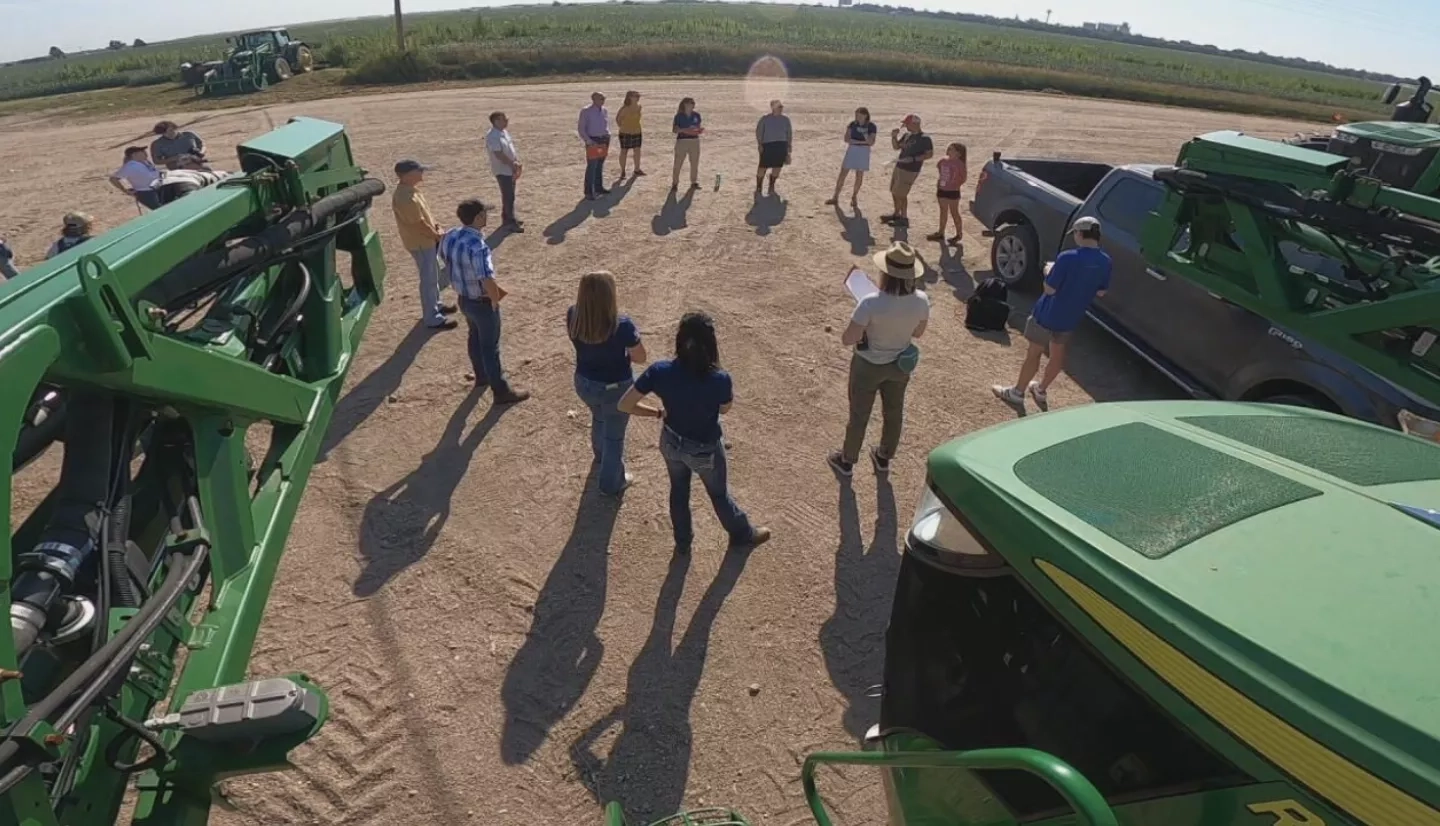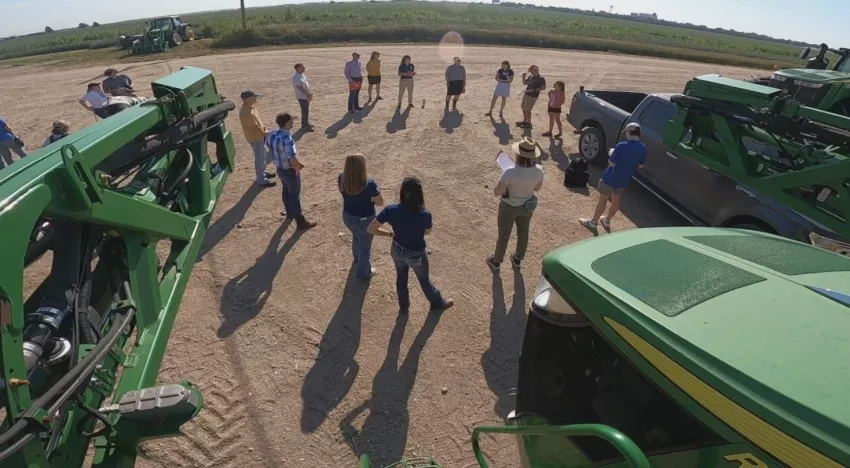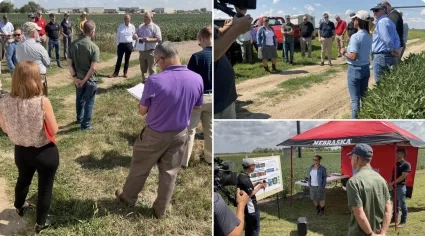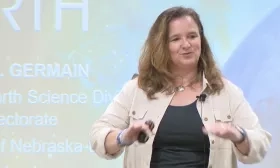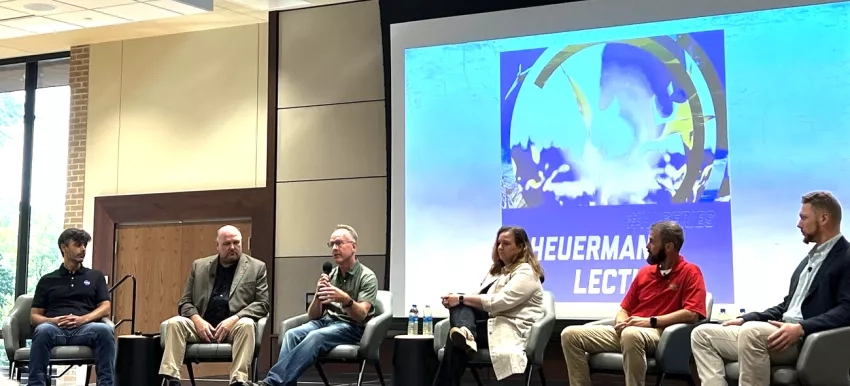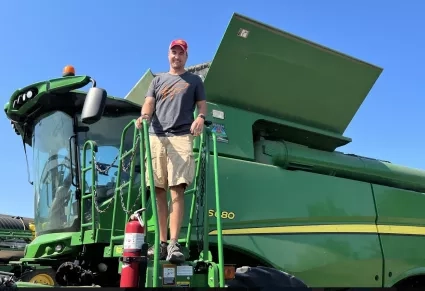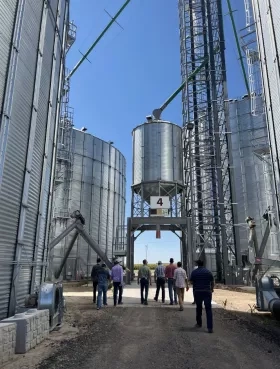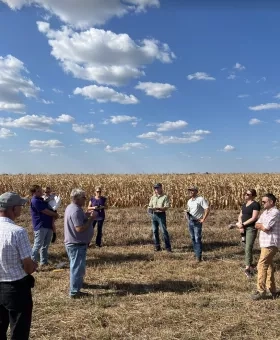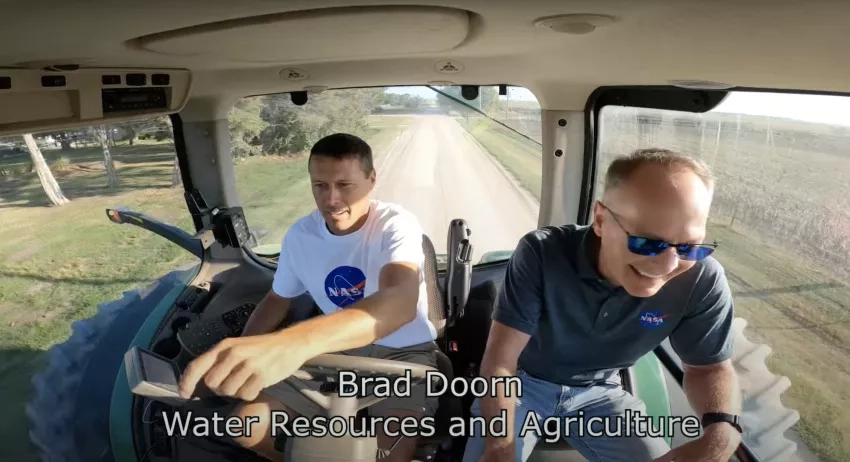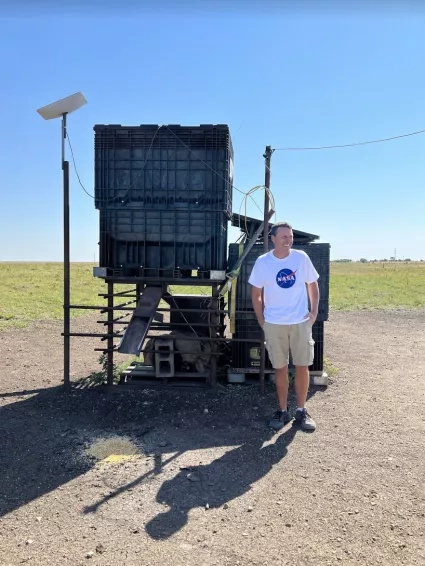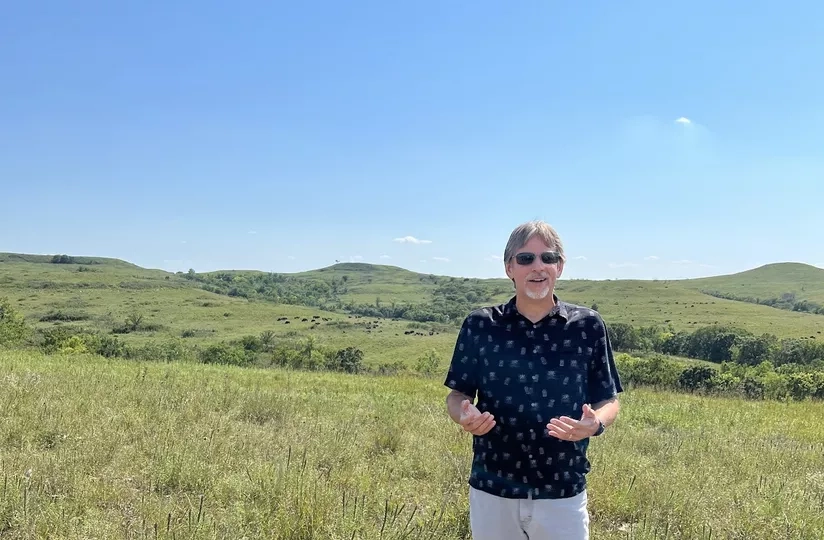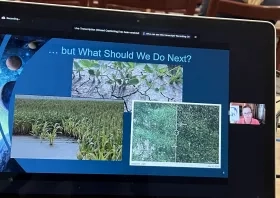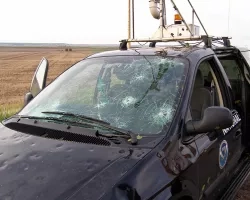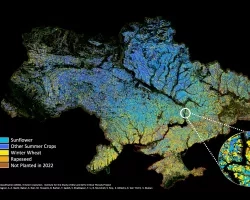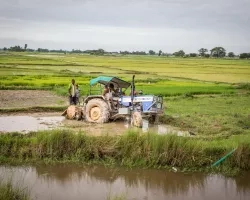"NASA is here, in Nebraska and Kansas? Why?" that was the question asked by farmers, ranchers, scientists, hotel clerks, and a YouTube celebrity as a crew of NASA Earth staffers and scientists took to the road of the "Space for Ag Roadshow and Listening Tour" in August 2022.
“Why are we here?" said Karen St. Germain, the head of NASA Earth science. "We're here because the planet that NASA studies the most is our home planet.” The NASA Earth science program currently has more than 20 satellite or space-based missions in orbit. These are anchored by the Landsat mission with its 50 years of continuous, high-quality Earth observations.
"NASA's mission is about the betterment of mankind, and everyone we know and everyone we love is right here on this planet," St. Germain said. "So, understanding how this planet works, and helping make better decisions, informed decisions, that's really what we're all about in Earth science."
This trip is designed to be a listening tour, said Brad Doorn, head of NASA's Applied Sciences agriculture program area. "We want to hear from farmers, from agriculture producers, what they need and then connect that to what data NASA can collect," he said. And so Doorn, St. Germain and handful of NASA experts traveled across Nebraska and through Kansas touring farms and listening to farmers.
The NASA team kicked off its listening tour Monday morning in Mead, Nebraska with a visit to Knuth Farms. Kerry and Angela Knuth work closely with the University of Nebraska-Lincoln’s Nebraska On-Farm Research Network to include satellite imagery, sensors, and soil mapping to help plan irrigation and nutrient management of their corn and wheat crops.
From Knuth Farms, the team caravanned to the Eastern Nebraska Research and Extension Center (ENREC) in Ithaca, Nebraska. The center is a research and development “living laboratory” spanning 10,000 acres with platforms to test tools and technologies at field-to- satellite scales. Led by host Doug Zelesky, ENREC director and other UNL researchers, they viewed field experiments using remote sensing technologies.
Back on campus, St. Germain gave the keynote presentation for the University's Heuremann lecture series. "It's so great to be back here at Lincoln. I started my career here, as a pup," said St. Germain, noting that she only left her position as the University’s first female faculty member in Electrical Engineering because of the opportunity to build an Earth science satellite system from scratch. Now she's returned to listen and find out more what information agricultural producers need from future NASA Earth missions.
"It takes a while to build and launch a new capability, so one of the things we want to be sure to do is build the most impactful system we can," she said. We need to engage farmers and agriculture leaders, St. Germain added, to find out what data and tools they need, both now and in the future.
Tuesday, August 23 the NASA crew hit the road. It was a full farm day beginning at Hunnicutt Farms in Giltner, Nebraska. Zach Hunnicutt and his brother Brandon work on land that’s been in the Hunnicutt family for nearly 120 years.
As 5th generation farmers, Zach and Brandon grow corn, popcorn, soybeans, and seed corn. At the farm and during a producer and stakeholder meeting at the Giltner Community Center, the NASA team heard about how, in part, changing weather conditions are making farming more challenging.
The second farm of the day was Batie Farm in Lexington, Nebraska. Don and Barb Batie work closely with the University of Nebraska-Lincoln Ag Extension Program to try out new ways of growing corn and soybeans. The Batie family has been farming in Nebraska since 1873 when the family traveled by steamship from England.
As the Sun sets on Tuesday, the team headed to Western Kansas.
Wednesday morning St. Germain and some of the team had to return home. Continuing onward were Brad Doorn and Aries Keck of the Applied Sciences Program; Forrest Melton of NASA's Western Water Application Office (WWAO); Chris Hain of NASA's Short-term Prediction Research and Transition Center (SPoRT); and Alyssa Whitcraft of NASA Harvest.
Located in Colby, Kansas Frahm Farms more than 20 farmers and ranchers from across western Kansas to meet with the NASA team and view the satellite and other data they use for advanced decision-making and resource management. Hosted by Lon Frahm and coordinated by Susan Metzger, Director of the Center for Agricultural Resources and the Environment (KCARE) at Kansas State University (K-State). the visit continued with a tour of Frahm Farm’s massive operation.
After a hearty lunch of chicken-fried steak and homemade mashed potatoes, with a side dish of Doorn doing a presentation on the current state of NASA data available for agricultural uses, the team continued onward.
After a four-hour drive across the stunningly beautiful Kansas landscape, viewing acres and acres of corn, soybeans, and sorghum, the team arrived at Flickner Innovation Farm.
Located in Moundridge, the Flickner Farm has a long history reaching back to the 1870s. Ray Flickner is the 5th generation to farm these 850-acres which uses precision irrigation techniques to grow corn, wheat, and soybeans. They manage many of the fields no-till and limited strip till techniques, with soil conservation in mind. The family’s commitment to improved soil health and sustainable water use makes the Flickner Fam a perfect location for K-State researchers to test new technologies and innovative solutions.
On Thursday, the team arrived at Klingenberg Farms, the home of farming YouTube sensation Farmer Derek.
Broadcasting from his working ranch and farm in Peabody, Kansas, Derek Klingenberg brings his love of growing corn, cows, and space to more than 150 thousand subscribers on YouTube. Along the gravel road in front of the farm, Klingenberg took the NASA crew on a tour of one of his popular YouTube videos, a hay-based model of our solar system. Each hay bale representing a planet on a scale of one foot equaling one million miles.
The Klingenberg Family has farmed in Kansas for generations, and after a midmorning snack of cinnamon rolls homemade by Klingenberg’s mother and a presentation of the geology and history of the area, Farmer Derek then took the NASA crew on a hay ride out to another one of his interactive YouTube displays.
Called the Off the Grid Prairie Cam, Klingenberg built a solar-powered cattle feed station, connected to satellite internet with a live microphone and camera for his YouTube followers. Subscribers can submit a message to the channel for a fee and watch as the feed corn is released to cows in the pasture, as well as move the camera around for views of the native prairie grass and wildlife in the Flint Hills of Kansas.
Waving goodbye to Farmer Derek’s YouTube followers, the NASA group traveled to the Konza Prairie Biological Station. First, Doorn and K-State’s Metzger joined NASA Earth science lead Karen St. Germain and other participants for a telephone news conference to discuss the trip. Audio of the press event is available at the NASA Earth website.
Then Melton, Doorn, Hain and Applied Sciences communication’s Aries Keck toured the expansive Konza Prairie Biological Station. The protected prairie is regarded as a ‘playground’ for scientists. Some tracts of land are kept untouched, some are burned every year, and others are burned only every seven years. Some tracts of land are grazed only by cattle and other tracts only by bison.
Then, the trip concluded with a presentation, over video conference, by NASA Earth Science lead Karen St. Germain at Kansas State University. In the coming months, building on work by NASA’s existing agriculture consortium NASA Harvest, NASA’s Applied Sciences Program will announce another consortium, one focused solely on domestic agriculture producers and research. Also in 2023, NASA will return to presenting at the largest farmer-led U.S. convention, the Commodity Classic.
“We supply data to the U.S. Drought Monitor, and the U.S. Department of Agriculture's monthly World Agricultural Supply and Demand Estimates (WASDE) report,” said Doorn. “NASA also has other applications for producers, such as NASA Harvest's precision nutrient management tools, the freely available water resourcing tool in the Western U.S. called OpenET, as well as the Crop Condition and Soil Moisture Analytics tool (Crop-CASMA)." All designed to put NASA’s data-driven management tools into the hands of farmers.
